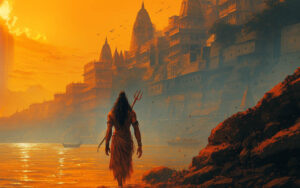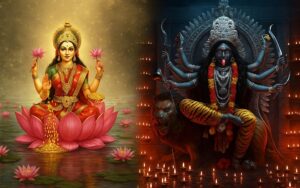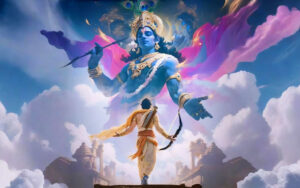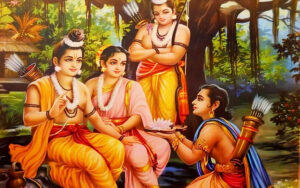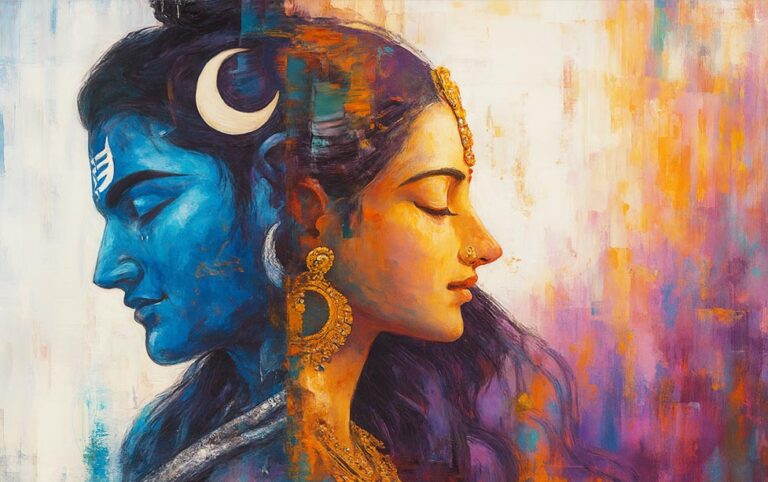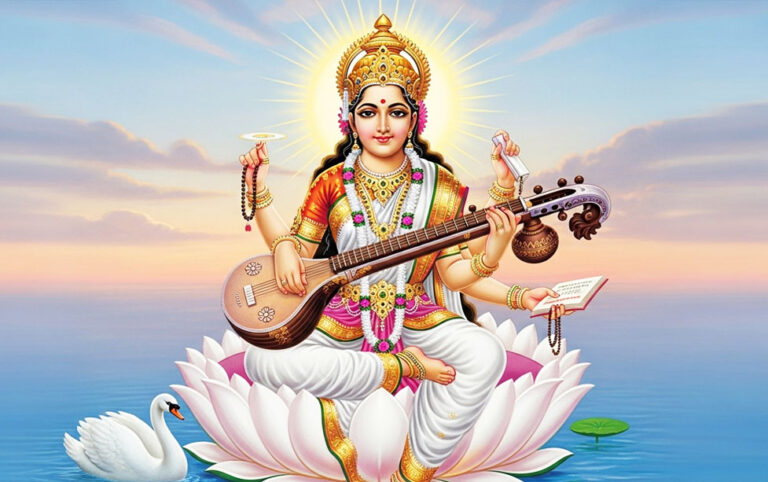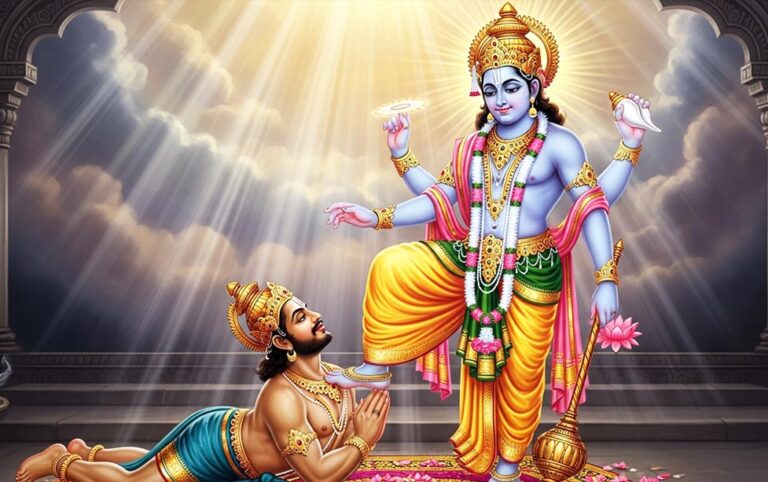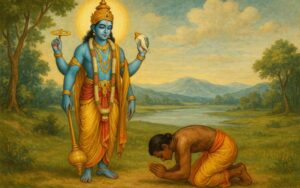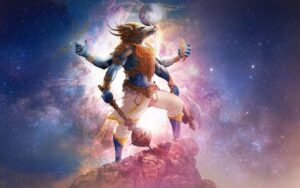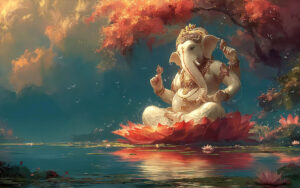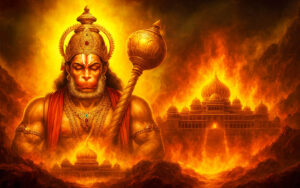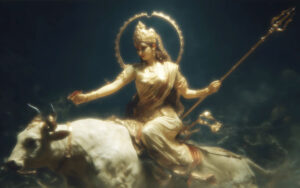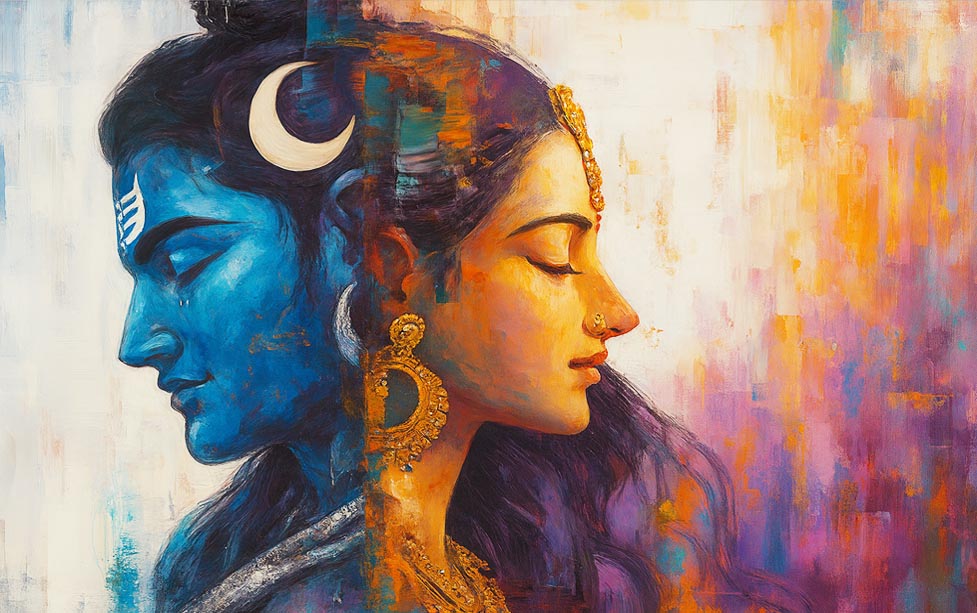
No time for reading the blog? Give it a listen on Spotify.

Sanatana Dharma presents a vision of God that transcends all our human-imposed limits of gender and identity.
We often picture God in our own image. For centuries, across many traditions, the Divine has been portrayed as a majestic, often male, figure in the sky—a king, a father, a ruler. This human tendency to anthropomorphize the sacred is understandable; it makes the infinite feel relatable.
But what if this projection limits our understanding of what God truly is?
Sanatana Dharma offers a profound and breathtakingly inclusive answer to this question. It presents a philosophical framework that doesn’t just tolerate different images of the divine but actively celebrates them as essential to a complete understanding.
At its core is a simple, profound truth: The Ultimate Reality is beyond all names, forms, and especially, beyond gender.
The Formless Foundation: Nirguna Brahman
Before we can talk about gods and goddesses, we must start with the foundation. Sanatana Dharma points to a supreme, ultimate reality called Brahman.
Brahman is not a being; it is Being itself.
It is the singular, formless, timeless, and indivisible consciousness from which everything arises.
It has no qualities (nirguna)—no size, no shape, no personality, and no gender.
Think of it as the vast, deep, silent ocean. This is Nirguna Brahman—the Absolute without attributes. It is pure potential, the “is-ness” of all that is. To assign it a gender would be like asking what color gravity is. The question simply doesn’t apply.
The Divine with Attributes: Saguna Brahman and the Dance of the Gods
If the formless ocean is Nirguna Brahman, then the waves and currents are Saguna Brahman—the Divine with attributes. This is where the magnificent pantheon of deities comes in.
Because the human mind struggles to relate to pure abstraction, the formless Brahman manifests in forms. These forms—like Shiva, Vishnu, Lakshmi, Durga, and countless others—are not separate “gods” competing for allegiance. They are different facets of the same diamond, different waves on the same ocean.
“The Truth is One, the wise call it by various names.” — Rig Veda
This is why Sanatana Dharma is inherently pluralistic. It recognizes that different people, with different temperaments and needs, will connect with the Divine in different ways.
A warrior might resonate with the powerful Durga, a musician with the artistic Saraswati, and a philosopher with the ascetic Shiva. All paths are valid.
The Divine Feminine: Shakti as the Cosmic Power
One of the most distinctive features of this philosophy is its profound reverence for the Divine Feminine, known as Shakti.
Shakti is not merely the “wife” of a god. She is the dynamic, creative energy of the universe. She is the power through which the formless Brahman becomes the formed cosmos.
Shiva represents pure, potential consciousness.
Shakti represents the active, manifesting power.
Without Shakti, Shiva is a corpse—pure potential with no ability to act. They are two sides of the same coin.
This is why goddesses in Sanatana Dharma are not passive consorts; they are powerful, independent agents. Durga is the invincible protector, Kali is the transformative force of time, and Lakshmi is the embodiment of abundance and grace.
This theology provides a sacred balance largely absent in purely patriarchal interpretations of the divine.
The Ultimate Union: Ardhanarishvara
Perhaps no other symbol in world spirituality captures the non-duality of gender as perfectly as Ardhanarishvara—the deity who is half-man (Shiva) and half-woman (Shakti).
This stunning form is the ultimate statement of inclusivity. It teaches us that:
The Divine is a complete unity of masculine and feminine energies.
Duality is an illusion. Separation between male and female, consciousness and energy, spirit and matter, is a product of the limited human mind.
True wholeness exists in integration, not in separation or hierarchy.
Ardhanarishvara is a living icon that shatters all our binary boxes, pointing toward a reality where all apparent opposites are reconciled.
What This Means for Us Today
This timeless philosophy holds profound lessons for our modern world:
For Spiritual Seekers: It offers incredible freedom. You are free to connect with the Divine in whatever form resonates with your heart, knowing that all forms lead to the same Formless One. Your personal relationship with the sacred is valid.
For Religious Tolerance: The core principle of “One Truth, Many Paths” is a powerful antidote to religious fundamentalism. It fosters a mindset that can respect other faiths as different, equally valid expressions of the human search for the Divine.
Sanatana Dharma invites us on a journey from the many to the One, and from the One back to the many. It allows us to appreciate the beautiful, personal forms of the divine while never forgetting the silent, formless reality that underlies them all.
It challenges us to see the sacred not just in a statue or a temple, but in every man, woman, and child—indeed, in every atom of this vast, shimmering universe. In a world often divided by differences, this ancient wisdom whispers a timeless truth: at the deepest level, beyond all names and forms, we are all expressions of the same, indivisible, and limitless Divine.


